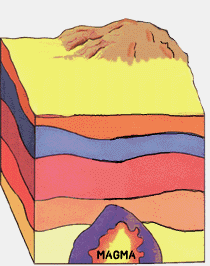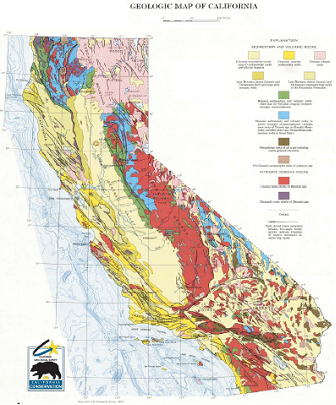|
Links to pages at this site |
|
Links to Book's Website |
|
Help available at this site |
|
-
Home
-
Quizzes
-
Module 1
Introduction
Earth's Interior
Earth's Oceans
-
Module
2
Plate Tectonics
Mountain Building
Geological Structures
Earthquakes
Measuring Geologic Time
-
Module
3
Evolution through Time
Atoms, Elements and Minerals
Volcanism and the Extrusive
Rocks
Intrusive Activity and the
Igneous Rocks
Weathering and Soil
Mass Wasting
-
Module
4
Sediments and
Sedimentary Rocks
Metamorphism and the
Metamorphic Rocks
Streams and Landscapes
Underground Water
Deserts and Wind Action
-
Module
5
Glaciers
Waves, Beaches and the Coasts
Earth Resources
Environmental Matters
|
|
Intrusive Activity, and the
Origin of Igneous Rocks
|
|
-
Quizzes
etc:
Information on Quiz-3,
Test-3 and other Quizzes, Tests, Class Meetings, Final Examination
-
Video Episodes:
-
Video Study Guide:
|
| |
|
|
| |
|
Plutonic
Rocks
Click on the title to access
and download this MS word document
|
| |
|
| |
|
| |
|
| |
|
| |
|
| |
|
| |
|
| |
|
|
|
| |
|
| |
| |
| |
| |
| |
| |
| |
| |
| |
| |
| |
|
|
|
|
 |
|
How Igneous Rocks Form?
Visit the URL:
http://www.fi.edu/fellows/fellow1/
oct98/create/igneous.htm
for the animation of igneous rocks and for more information on the igneous
rocks. |
|
Plutonic Igneous Rocks
-
Igneous rocks are primary rocks in the rock cycle and form by solidifying
from molten condition.
-
There are two kinds of igneous rocks: plutonic and volcanic.
-
Intrusive or plutonic rocks form from the slow cooling and solidification
of magma.
|
| |
|
| |
|
| |
|
| |
|
| |
|
| |
|
| |
|
| |
|
| |
|
| |
|
| |
| |
| |
|
|
|
|
-
The intrusive igneous rocks have phaneritic (or coarse grained) to
porphyritic textures, compared to the porphyritic to aphinitic textures of
extrusive igneous rocks.
-
Felsic (60-75% silica, with ďfreeĒ quartz) composition dominates the
intrusive or plutonic rocks (e.g., granites and granodiorites), compared
to the mafic (with ~50% silica, no ďfreeĒ quartz) basalts in the case of
extrusive or volcanic rocks. Gabbro, the plutonic equivalent of basalt, is
mafic and diorite, the plutonic equivalent of andesite, is of intermediate
composition.

-
Granites
and granitization complete the ďrock cycleĒ as granite batholiths, the most
common plutonics, often form in the core zones of folded mountain belts
through the process of dynamothermal metamorphism. But then, note that the
primordial crust too is likely to have been granitic.
|
 |
|
| |
| |
| |
| |
| |
| |
| |
| |
| |
| |
| |
| |
| |
| |
| |
| |
| |
| |
| |
| |
| |
|
The red and pink shaded regions in this geological map of
California are intrusive igneous bodies. This map can be accessed at the
California Geological Survey website
http://www.consrv.ca.gov/cgs/information/geologic_
mapping/index.htm#Related%20Links.
These igneous intrusives form the bulk of the Sierra Nevada Ranges.
Contrasted with these large batholiths are such more common though shallow
or near-surface features as
dikes and sills. |
|
| |
| |
| |
| |
| |
| |
| |
| |
| |
| |
|
|
|
|
|
|
|
|
|
|





